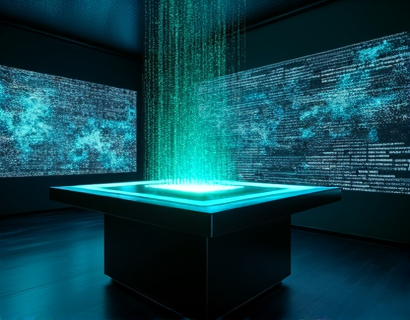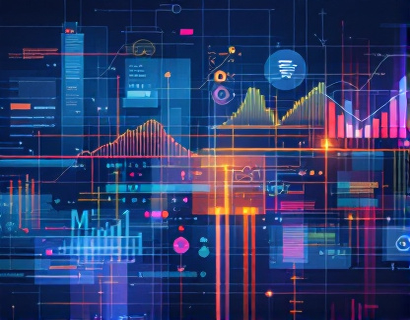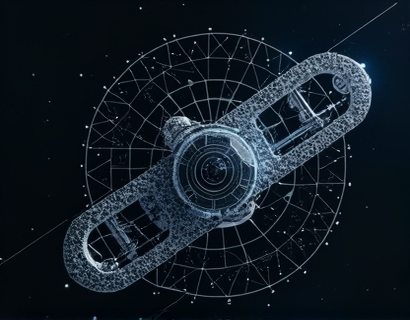Unlocking the Cosmic Convergence: Exploring the Hidden Intersections of Science and Mathematics
The universe, in its vast and intricate tapestry, weaves together the threads of science and mathematics in a dance of profound interconnectedness. This article delves into the hidden intersections where these two disciplines converge, revealing the profound secrets that underpin our understanding of reality. For science and math enthusiasts, this exploration promises to ignite curiosity and deepen comprehension of the complex theories that shape our cosmos.
The foundation of this cosmic convergence lies in the language of mathematics, which serves as the universal tongue through which the laws of physics are expressed. Mathematics is not merely a tool for solving problems; it is the framework that allows us to describe, predict, and understand the natural world. From the simplest arithmetic to the most advanced calculus, mathematical concepts underpin the very fabric of scientific inquiry.
One of the most striking examples of this convergence is in the realm of physics, where mathematical equations describe the fundamental forces and particles that constitute the universe. The Standard Model of particle physics, for instance, relies heavily on mathematical structures such as groups and fields to describe the behavior of subatomic particles. The elegance of these mathematical frameworks not only provides a precise description of physical phenomena but also suggests a deeper, almost aesthetic, beauty in the workings of the universe.
Consider the theory of relativity, formulated by Albert Einstein, which revolutionized our understanding of space and time. The mathematical framework of differential geometry is central to this theory, allowing Einstein to describe how mass and energy curve spacetime. The famous equation E=mc^2, a cornerstone of modern physics, is a direct result of this mathematical description. Here, the interplay between mathematics and physics is not just functional but profoundly symbiotic, each enhancing the other's capabilities.
The cosmos itself is a grand mathematical structure, with patterns and symmetries that echo through the scales of the universe. From the fractal patterns of galaxy distributions to the quantum fluctuations that seeded the early universe, mathematics is omnipresent. The Fibonacci sequence, a simple mathematical pattern, appears in the arrangement of leaves on a stem, the spirals of shells, and even the structure of galaxies. This ubiquity of mathematical patterns suggests a deep underlying order to the universe, one that can be uncovered through the lens of mathematics.
In the field of cosmology, the study of the universe's large-scale structure and evolution, mathematical models play a crucial role. The Lambda-CDM model, which is the current standard model of cosmology, uses a combination of general relativity and cold dark matter to explain the observed expansion of the universe and the distribution of cosmic structures. The precision of these models is a testament to the power of mathematical thinking in unraveling the mysteries of the cosmos.
Quantum mechanics, another pillar of modern physics, is equally dependent on mathematical rigor. The Schrödinger equation, a fundamental equation in quantum mechanics, is a partial differential equation that describes how the quantum state of a physical system changes over time. The probabilistic nature of quantum phenomena, encapsulated in this equation, challenges our classical intuitions and highlights the profound impact of mathematics on our understanding of reality.
The intersection of science and mathematics is not limited to theoretical physics. In biology, mathematical models help us understand complex systems such as ecosystems, genetic networks, and neural circuits. The field of systems biology, for example, uses mathematical and computational methods to model and simulate biological processes, providing insights that are difficult to obtain through experimental methods alone. The ability to quantify and model biological systems mathematically has led to breakthroughs in areas such as drug discovery and personalized medicine.
In the realm of computer science, the relationship with mathematics is perhaps the most direct. Algorithms, the backbone of computational processes, are fundamentally mathematical in nature. The efficiency and correctness of algorithms are analyzed using mathematical concepts such as complexity theory and graph theory. The development of machine learning and artificial intelligence relies heavily on advanced mathematical techniques, including linear algebra, calculus, and probability theory. The synergy between computer science and mathematics continues to drive innovation in technology and data analysis.
The beauty of this convergence is not only in its practical applications but also in the philosophical implications it carries. The fact that mathematical concepts can describe physical reality raises profound questions about the nature of existence and the human mind. Is mathematics a discovery, an inherent property of the universe, or an invention, a tool created by human minds? This debate has intrigued philosophers and scientists for centuries and continues to fuel discussions in both fields.
The historical development of science and mathematics is intertwined, with each advancing the other in a continuous loop of discovery. The ancient Greeks, with figures like Pythagoras and Euclid, laid the foundations of mathematical reasoning and geometric thought. Their work influenced later scientists such as Galileo and Newton, who used mathematical methods to describe the motion of celestial bodies and the laws of mechanics. The 20th century saw further integration, with mathematicians like David Hilbert and physicists like Einstein collaborating to push the boundaries of knowledge.
In modern times, the convergence of science and mathematics is more evident than ever. Interdisciplinary research areas such as theoretical physics, computational biology, and data science exemplify this integration. These fields require a deep understanding of both mathematical principles and scientific phenomena, fostering a new generation of thinkers who can bridge the gap between the abstract and the concrete.
The educational value of exploring this convergence cannot be overstated. For students and learners, understanding the role of mathematics in science provides a deeper appreciation of the subject matter. It encourages critical thinking and problem-solving skills, essential for tackling the complex challenges of the future. Educational programs that emphasize the interplay between mathematics and science can inspire a new wave of innovators and thinkers who are equipped to explore the unknown.
Moreover, the public's engagement with these concepts can be enhanced through accessible content and storytelling. Science and math communication plays a crucial role in demystifying complex ideas and making them relatable. Documentaries, books, and online platforms that explain the wonders of science and mathematics in an engaging way can spark curiosity and foster a broader appreciation for these disciplines.
In conclusion, the cosmic convergence of science and mathematics is a rich and fertile ground for exploration. By delving into the intricate connections between these two fields, we not only enhance our understanding of the universe but also inspire a sense of wonder and awe. As we continue to uncover the hidden intersections, we pave the way for new discoveries and a deeper appreciation of the mathematical universe we inhabit.










































